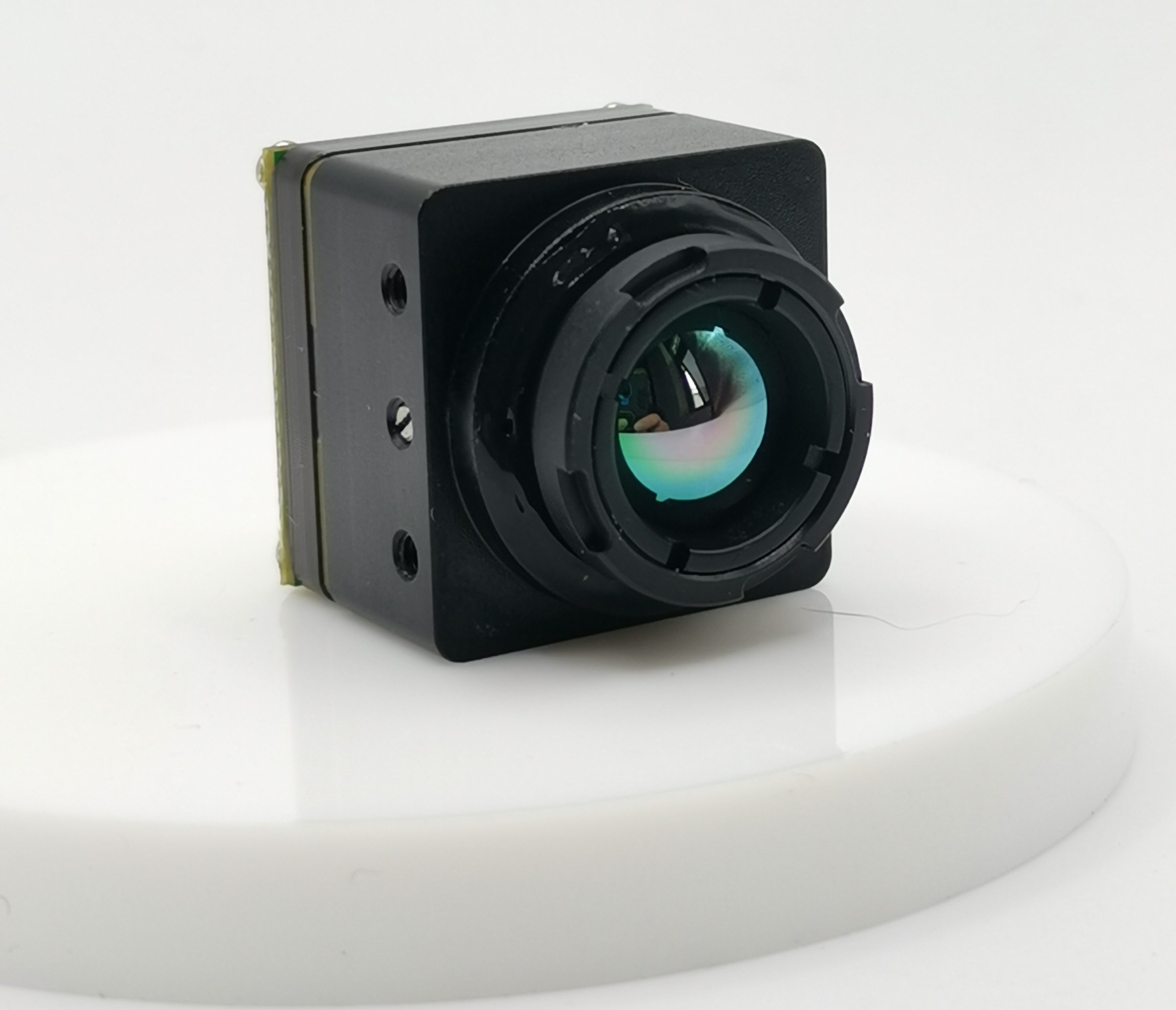Mastering Drone Hunting with iSun Analog FPV Thermal Camera: A Step-by-Step Guide

Getting Started with Your iSun Analog FPV Thermal Camera
Welcome to the exciting world of drone hunting with the iSun analog FPV thermal camera! In this section, we will delve into the basics of FPV thermal cameras and guide you through the essential preparations for your first drone hunt.
Understanding the Basics of FPV Thermal Camera
What Makes the iSun Analog FPV Thermal Camera Stand Out
The iSun analog FPV thermal camera stands out due to its cutting-edge thermal imaging technology, which provides exceptional clarity and precision in capturing heat signatures. Its user-friendly interface and seamless integration with drones make it a top choice for enthusiasts and professionals alike.
The Role of Thermal Cameras in Drone Hunting
FPV Thermal Cameras play a pivotal role in drone hunting by enabling users to detect heat differentials emitted by drones, even in low-light conditions. This capability allows for effective surveillance and tracking, making it an indispensable tool for hunting down elusive targets.
Preparing for Your First Drone Hunt
Essential Gear and Setup
Before embarking on your first drone hunt, ensure that you have the essential gear in place. This includes a reliable drone equipped with the iSun analog FPV thermal camera, a compatible viewing device or monitor, spare batteries, and any additional accessories for optimal performance.
Safety Considerations and Legal Aspects
Safety should always be a top priority when engaging in drone hunting activities. Familiarize yourself with local regulations regarding drone usage and adhere to safety guidelines at all times. Additionally, consider obtaining any necessary permits or permissions required for drone hunting within your area of operation.
By understanding the fundamentals of FPV thermal cameras and preparing diligently for your first drone hunt, you are well on your way to mastering this exhilarating pursuit.
Setting Up Your iSun Analog FPV Thermal Camera for Drone Hunting
Now that you have a good grasp of the fundamentals and are ready to embark on your drone hunting journey, it's time to set up your iSun analog FPV thermal camera for optimal performance. This section will guide you through the installation, configuration, testing, and calibration processes to ensure that your thermal camera is ready for action.
Installation and Configuration
Mounting Your Camera on the Drone
The first step in setting up your iSun analog FPV thermal camera is securely mounting it onto your drone. Ensure that the camera is positioned in a way that provides a clear field of view without obstructing any vital components of the drone. Use the appropriate mounting hardware and follow the manufacturer's guidelines for a safe and stable installation.
Adjusting Settings for Optimal Performance
Once the camera is mounted, it's essential to configure its settings for optimal performance. Take some time to familiarize yourself with the camera's interface and adjust parameters such as image resolution, color palettes, and temperature scales according to your hunting requirements. Fine-tuning these settings will enhance the accuracy and clarity of thermal imaging during your hunts.
Testing and Calibration
Conducting Pre-flight Checks
Before taking off on your hunting expedition, conduct thorough pre-flight checks to ensure that both the drone and iSun analog FPV thermal camera are functioning correctly. Verify that all connections are secure, batteries are fully charged, and there are no signs of damage or wear on any components. Additionally, perform a test run of the camera to confirm that it is capturing thermal imagery as expected.
Calibration Techniques for Accurate Thermal Imaging
Calibration is crucial for obtaining accurate thermal imaging results. Follow the manufacturer's guidelines to calibrate your iSun analog FPV thermal camera effectively. This may involve adjusting temperature range settings, compensating for environmental factors, or aligning the camera with specific reference points. Proper calibration ensures that heat differentials are accurately represented in the captured images, enhancing your ability to detect drones during hunts.
Mastering the Hunt: Practical Tips and Techniques
Now that you have your iSun analog FPV thermal camera set up and ready to go, it's time to master the art of drone hunting. In this section, we'll explore practical tips and techniques for identifying your target, engaging in tracking, and maximizing the capabilities of your thermal camera.
Identifying Your Target
Understanding Heat Signatures
When hunting drones with a thermal camera, understanding heat signatures is crucial. Drones emit heat due to their electronic components and propulsion systems. This results in distinguishable temperature variations that can be captured by the iSun analog FPV thermal camera. By familiarizing yourself with typical drone heat signatures, you can effectively differentiate them from other objects or environmental factors.
Using the iSun Analog FPV Thermal Camera to Spot Drones
The iSun analog FPV thermal camera is specifically designed to detect heat differentials, making it an invaluable tool for spotting drones during hunts. Its advanced thermal imaging technology enables you to identify drones even in challenging conditions such as low light or dense foliage. By leveraging the capabilities of your thermal camera, you can enhance your ability to locate and track drones with precision.
Engaging and Tracking
Maneuvering Your Drone for Optimal Tracking
When engaging in drone hunting activities, maneuvering your drone strategically is essential for optimal tracking. Position your drone in a way that allows the iSun analog FPV thermal camera to maintain a clear line of sight to the target area. Utilize smooth and controlled movements to avoid startling potential targets while ensuring that your thermal camera captures uninterrupted footage for analysis.
Recording and Analyzing Footage
Capturing high-quality footage using your iSun analog FPV thermal camera is essential for analyzing drone behavior and movement patterns. Record all hunting sessions to review the footage later, allowing you to identify recurring flight paths or areas frequented by drones. Analyzing recorded footage provides valuable insights that can inform future hunting strategies and improve overall success rates.
By understanding heat signatures, utilizing the capabilities of the iSun analog FPV thermal camera, and employing effective engagement and tracking techniques, you are well-equipped to elevate your drone hunting skills to new heights.
Beyond the Basics: Advanced Strategies and Maintenance
Now that you have honed your skills in drone hunting with the iSun analog FPV thermal camera, it's time to explore advanced strategies and essential maintenance practices to further elevate your hunting experience.
Advanced Hunting Techniques
Nighttime Hunting Strategies
Drone with thermal camera used for hunting excels in nighttime operations, leveraging the advantage of low light conditions to detect heat differentials emitted by drones. When conducting nighttime hunts, prioritize areas with minimal artificial lighting to enhance the contrast of thermal signatures against the surroundings. Additionally, consider using infrared illuminators or auxiliary lighting to improve visibility and extend the effective range of your thermal camera.
Dealing with Adverse Weather Conditions
Adverse weather conditions can pose challenges during drone hunts, but with the right approach, you can mitigate their impact. When faced with inclement weather such as rain or fog, leverage the capabilities of the iSun analog FPV thermal camera to penetrate through visual obstructions caused by precipitation or atmospheric moisture. The thermal imaging technology allows you to detect drones based on their heat emissions, irrespective of weather conditions, providing a distinct advantage over traditional visual surveillance methods.
Maintaining Your iSun Analog FPV Thermal Camera
Routine Maintenance Tips
To ensure optimal performance and longevity of your iSun analog FPV thermal camera, regular maintenance is essential. Clean the lens and housing of the camera using a soft, lint-free cloth to remove any dirt or debris that may affect image clarity. Inspect all connections and cables for signs of wear or damage, and replace any components as needed. Additionally, keep the firmware of the camera up to date by installing any available updates provided by the manufacturer.
Troubleshooting Common Issues
Despite its reliability, occasional issues may arise with your iSun analog FPV thermal camera. In case of connectivity issues or abnormal behavior, start by power cycling both the camera and its connected devices. If persistent issues occur, refer to the user manual for troubleshooting guidance or contact technical support for assistance. Familiarize yourself with common error codes or indicators displayed by the camera to expedite diagnosis and resolution of potential issues.
By implementing advanced hunting techniques tailored for nighttime operations and adverse weather conditions, as well as adhering to routine maintenance practices for your iSun analog FPV thermal camera, you are poised to excel in drone hunting across a diverse range of scenarios.
Wrapping Up: Key Takeaways and Next Steps
As we conclude our comprehensive guide to drone hunting with the iSun Analog FPV Thermal Camera, it's essential to reflect on the key insights gained from this exhilarating pursuit and explore the exciting possibilities that lie ahead.
Reflecting on What We've Learned
Throughout our exploration of drone hunting with the iSun Analog FPV Thermal Camera, several key takeaways have emerged, shedding light on the transformative potential of thermal imaging technology in the realm of aerial surveillance and tracking.
Key Takeaways from Drone Hunting with the iSun Analog FPV Thermal Camera
Enhanced Surveillance Capabilities: The iSun Analog FPV Thermal Camera has empowered hunters with unparalleled surveillance capabilities, enabling them to detect drones even in challenging environmental conditions such as low light or adverse weather.
Precision Tracking and Engagement: By harnessing the advanced thermal imaging technology of the iSun camera, hunters can engage in precise tracking and engagement strategies, maximizing their success rates in drone hunting expeditions.
Adaptability Across Scenarios: The versatility of the iSun Analog FPV Thermal Camera extends beyond drone hunting, offering applications in areas such as building inspections, search and rescue operations, and wildlife monitoring, showcasing its multifaceted utility.
Exploring Further Possibilities
As you embark on your journey in drone hunting with the iSun Analog FPV Thermal Camera, there are exciting avenues to explore that promise to elevate your expertise and expand your horizons within the realm of thermal imaging technology.
Advanced Applications and Future Trends in Thermal Imaging
Integration with AI Technology: The integration of artificial intelligence (AI) algorithms with thermal imaging systems holds immense potential for automated target recognition and behavioral analysis, revolutionizing the efficiency of drone hunting operations.
Advancements in Image Processing: Ongoing advancements in image processing algorithms are poised to enhance the clarity and interpretability of thermal imagery captured by FPV cameras, opening new frontiers for precision detection and identification.
Continuing Your Journey in Drone Hunting
As you continue your exploration of drone hunting with the iSun Analog FPV Thermal Camera, consider delving into specialized training programs or workshops focused on advanced techniques for aerial surveillance. Additionally, stay abreast of emerging developments in thermal imaging technology through industry publications and forums to remain at the forefront of innovation within this dynamic field.
In embracing these key takeaways and charting a course towards further advancements in thermal imaging applications, you are poised to embark on a rewarding journey characterized by continuous learning and groundbreaking discoveries.
See Also
Becoming an Expert in Drone Photography with Analog FPV Thermal Cameras: An In-Depth Guide
Becoming Proficient in Drone Surveillance: The ISUN Thermal Camera Tutorial
Becoming Skilled in Drone Surveillance: Using Analog FPV Thermal Camera
Contact Us: Ms. Coco Huang
E-mail: sales@iasun.cn
WhatsApp/Wechat: +86 13510421923

